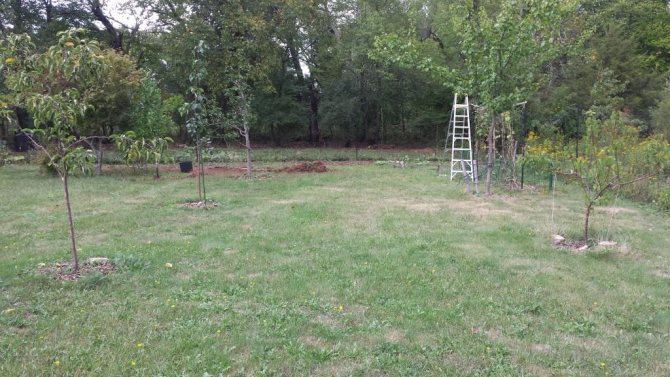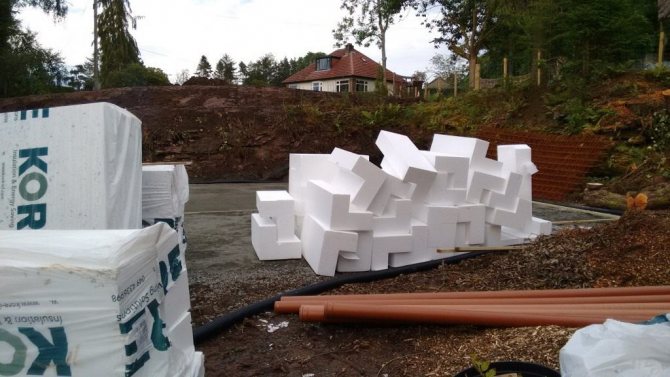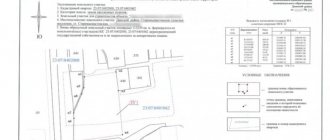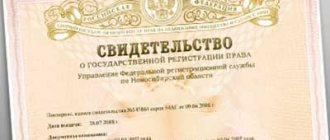Home / Real estate / Land / Purchase and sale
Back
Published: 12/18/2016
Reading time: 11 min
0
1827
Land for almost any purpose can be purchased from the state or from a private person, that is, the owner.
In both cases, this is a rather lengthy process, since a number of documents will be required..
And if, in the case of a purchase from the state, all documents must be provided by the buyer, then in a transaction with a private person, the seller will also be required to prepare a certain list of papers. How exactly should the procedure for purchasing land from the owner be carried out?
- What the law says
- What is the procedure for buying from an owner?
- What documents will you need to stock up on?
- How to draw up a contract
- Where to expect pitfalls
Buyer's side papers
The buyer presents:
- citizen's passport;
- notarized consent of the spouse to complete the transaction, if the person is married;
- a certificate from a psychoneurological dispensary stating that the buyer is not registered;
- a certificate from a drug treatment clinic stating that the buyer is not registered.
Additionally, documents confirming the buyer's solvency may be required. For example, a bank account statement containing an amount sufficient to pay for the site.
Seller's papers
The owner of the property shall present at the buyer's request:
purchase and sale agreement, exchange agreement, certificate of inheritance, court decision or other document confirming the legality of the acquisition of the plot;- extract from the Unified State Register of Real Estate;
- consent of the guardianship and trusteeship authority to complete the transaction, if the plot is partially owned by a minor;
- cadastral passport, if it was issued before 2017;
- power of attorney to represent the interests of other owners, if the site is owned by several people;
- certificate of no debt for consumed utilities.
An extract from the Unified State Register contains information from the register regarding the site as of the date the document was issued. Therefore, it is recommended to request another statement from the seller right before signing the contract.
Attention! By completing a transaction with the owner's representative, the buyer is at risk. The power of attorney can be canceled at any time by any notary, and the other party to the agreement will not know about it. An agreement signed by an unauthorized person is invalid.
If there is a building on the site, then you should not enter into an agreement to purchase the site. The earth follows the fate of the structure that is located on it. This means that the owner of the house receives the right to use the land located underneath it. In this case, a purchase and sale agreement for the house must be concluded.
Contract of sale
The parties draw up the purchase and sale agreement themselves.
Typically it contains the following parts:

Details and technical information. Name, date, place of execution of the contract.- Information about the parties. For the buyer and seller, the full name, date of birth, place of registration, passport details (number, by which authority and when it was issued) are indicated.
- Subject of the agreement. The seller undertakes to transfer ownership of a plot of land, and the buyer is obliged to accept and pay for it. The plot should be described in detail, indicating the area, address, cadastral number, permitted use.
- Information about the seller's rights to the plot. He must be the owner of the property.
- Information about restrictions, encumbrances on the use of land, and real estate objects located on it.
- Cost of property and payment procedure. Usually the money is transferred in cash or transferred to the seller's bank account. The parties determine whether payment is made before the transfer of land, in parts before and after, or in full after the transfer. The price is entered in numbers and words.
- Rights and obligations of the parties. The seller is obliged to provide reliable information to the buyer and transfer ownership of the plot to him in a timely manner. The buyer must accept and pay for the property and has the right to demand timely transfer of the plot and a reduction in price or termination of the contract if the seller has provided incorrect information about the plot.
- Responsibility measures. For failure to comply with the terms of the agreement, the parties are liable in accordance with the law.
- Final provisions. The number of copies of the agreement, resolution of disputes by sending pre-trial claims, whether the agreement is subject to notarization and other features are indicated.
- Signatures of the parties.
- List of applications, if any.
Important! The agreement should indicate who should carry out the state registration of the transaction in Rosreestr.
The parties should not stipulate in the contract large fines or penalties for failure to comply with any provisions of the contract. The amount of sanctions may be reduced in court if it is not proven that the guilty person caused real damage in the appropriate amount by his actions.
The agreement is drawn up in at least 3 copies - for the buyer, the seller and for Rosreestr.
Development of the gardening area
On the next sheet of the plan diagram, highlight the vegetable garden area. The garden, berry garden and vegetable garden can be located in a common area, divided in front of buildings, to the side or behind, but the arrangement of plants should always go from north to south for better lighting. If all 3 types of crops are located one after another, then a vegetable garden is placed in the first section, whose low plants will not shade the crops of the second section (berry gardens), and they, in turn, will not create problems with lighting of fruit crops. If the garden, berry garden and vegetable garden are planned to be located in separate parts of the site, then their placement in nature must meet the following conditions:
- The area for the garden and berry garden should be located in an open, sunny place with high groundwater levels. You cannot plant a garden in a lowland. Cold air currents and excess water during spring floods will negatively affect crops
- a garden plot should include a crop rotation with 5-11 crops, so that they reach their original place of cultivation no earlier than 3-5 years. The site should receive sufficient sunlight and be protected from drafts.
For successful development of the garden and berry zone, it is necessary to carefully consider which crops will be placed in the allocated area, and place them on a diagram indicating the types and distance from each other. When placing crops on the diagram, keep in mind that the distance between fruit crops should be at least 3-4 m (3 m for dwarf or columnar varieties), between shrubs 1.5-2.0 m. Write down the names of fruit and berry crops in your garden diary and a brief description, and in the plan diagram indicate their location on the site area under numbers.

Young orchard. © RedSun
The garden plan and rules for planting a vegetable garden are discussed in detail in the articles “Layout of a fruit and berry garden”, “Tips for beginners: basic vegetable crops and crop rotation” and others posted on the pages of the “Botanichka” website.
Are there any differences in documentation when acquiring land for individual housing construction, in SNT or DNP?

But owning a plot in a DNP or SNT presupposes joining a non-profit organization of owners. Such associations have membership fees, as well as non-targeted fees.
When purchasing a plot of land in the DNP or in the SNT, it is worth asking the owner for a certificate of absence of debts to the partnership for membership, target fees and other payments. The document is issued by the chief accountant of the organization.
What do you need to prepare to register a transaction?
Necessary papers for registering an agreement in Rosreestr:
- an application prepared using an approved template;
- payment order confirming payment of the state duty;
- 2 originals of the purchase and sale agreement;
- copies of passport pages;
- power of attorney for a representative, if the owner does not contact the organization himself.
The statement states:
- the name of the Rosreestr department where documents are submitted;
- registration data about the application - incoming number, number of sheets, number of attachments, date and time of acceptance of the application (filled in by an employee of the organization receiving the application);
- request to carry out state registration of property rights;
- information about the object (cadastral number of the site, address, other characteristics);
- section No. 5 of the template, which concerns changes in cadastral registration data, is not filled out;
- indication of the type of transaction that needs to be registered (purchase and sale transaction);
- information about the new owner - full name, date and place of birth, SNILS, passport information, registration address, contact telephone number;
- information about the owner’s representative, if he does not submit the application in person (full name, date and place of birth, SNILS, passport details, registration address);
- method of submitting the application and receiving a response (in person, by mail or electronically);
- a note on receipt of a receipt confirming the acceptance of documents for consideration;
- an indication of whether an extract from the Unified State Register is required;
- list of applications;
- consent to the processing of personal data;
- confirmation that the application contains reliable information, and the requirements of the legislation of the Russian Federation were not violated when concluding the contract;
- date, signature, surname and initials;
- mark of the specialist who accepted the application.
After registering the transfer of ownership, the buyer receives:
- original contract with a mark of registration;
- an extract from the Unified State Register of Real Estate with up-to-date information about the plot, its owner, encumbrances, etc.;
- other documents, if the applicant submitted them during registration.
An extract from the Unified State Register may not be issued if the owner does not require it.
Development of the economic zone
The primary tasks are the installation of a water supply or artesian and sewerage system with the installation of a toilet. Arrange your living conditions. Set up a tent or trailer, temporary storage for building materials, tools, and other ancillary installations. Then, having a construction plan, you begin to import building materials, dig the foundation, etc.

Set up a temporary warehouse for building materials, tools, and other ancillary equipment. © Sustainable selfbuild
What cannot be demanded?

To complete a transaction, an agreement and an acceptance certificate are required, unless otherwise specified in the agreement itself.
The buyer and seller cannot demand any documents from each other. But the other party to the transaction has the right to refuse the purchase (or sale) if its request is not satisfied.
The buyer should not require a certificate of family composition and the consent of the guardianship and trusteeship authorities to complete the transaction if the minor is not the owner of the plot. The child's parents can freely dispose of their property. But it is impossible to register on a land plot where there is no building.
Attention! There is also no need to require a certificate of ownership, a cadastral passport, or a certificate of absence of encumbrances on the site. These documents have been abolished today - information is issued in the form of an extract and the Unified State Register of Real Estate.
What will the seller need to prepare?
Speaking about the documents that the seller will have to provide at the time of the transaction, it should be noted that their list is quite small, but their preparation will take quite a lot of time.
Thus, the seller (if it is a legal or natural person not related to state or municipal authorities) will need to provide to complete the transaction:

- Certificate of ownership of a specific plot along with documents confirming the legality of obtaining such a document;
- Cadastral passport and site plan (you can get them from Rosreestr and make and certify their copies there);
- Documents confirming the absence of any encumbrances on the site, as well as debts on it (for example, to the tax authorities);
- The spouse’s permission to carry out the transaction in a notarized form (even if we are talking about a plot acquired before the official marriage);
- In a situation where the interests of minor family members (the seller’s own children or adopted children) may be affected during the transaction, it will be necessary to have an appropriately issued permission from the guardianship and trusteeship authorities to conclude a purchase and sale agreement for a particular land plot;
- Refusal of administrative entities and other persons having the right of first refusal to purchase a plot of such their right.
If all documents are prepared correctly and in full, and the acquiring party was also able to meet these requirements, the moment comes for re-registration of ownership.







